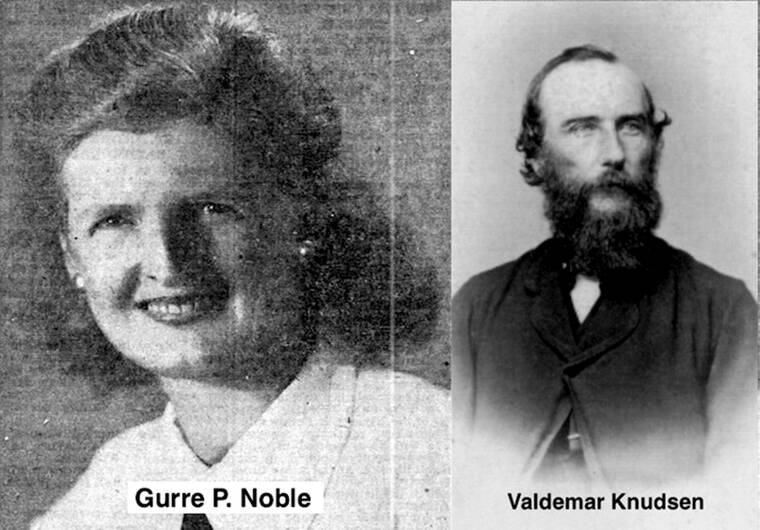In her forward to “Kanuka of Kaua‘i,” the biography of west Kaua‘i konohiki (king’s agent) Valdemar Knudsen (1820-98), which she co-wrote with Valdemar’s son, “Kaua‘i’s Teller of Hawaiian Tales” Eric Knudsen (1872-1957), Isle author and poet Gurre P. Noble (1902-1989) wrote the following in referring to Valdemar Knudsen:
“O, there are men to whom a mountain sings, the surf speaks louder, and the wild winds shout the secrets of the sea and earth – the things that other men will never know about.”
Noble also wrote the epilogue to “Kanuka of Kaua‘i,” (Kanuka being the Hawaiian word for Knudsen), and gave “Kanuka of Kaua‘i” a poetic touch in her use of words and in her descriptions of the west Kaua‘i of long ago, while Eric Knudsen related historical facts.
Gurre P. Noble, daughter of Mrs. Olga Berger, also produced books on poetry, biographies, children’s stories and textbooks.
Her poetry, published regularly in “The Honolulu Advertiser,” was well-received by reviewers, who described her writing as “powerful” and “mature,” and inspired by the charm of old Hawai‘i.
Valdemar Knudsen, born and educated in Norway, engaged in book publishing in New York, prospered in California during the 1849 gold rush, and had nearly died of fever in Panama before sailing for Kaua‘i.
He arrived at Koloa Landing in 1857, and was soon hired by Hermann Widemann to manage Grove Farm Plantation.
Knudsen later bought leases to a vast area of western Kaua‘i and was appointed konohiki of them by Kamehameha IV.
There, he turned to ranching and learned from its people, with whom he spoke Hawaiian fluently, their legends and a treasure of Hawaiian folklore that today would be nearly forgotten if not for “Kanuka of Kaua‘i.”
In 1867, he married Anne Sinclair, daughter of Eliza Sinclair, who bought Ni‘ihau from Kamehameha V in 1864.
Born at Waiawa, Kaua‘i, his son, Eric Knudsen, was a rancher, sugar planter, politician and collector of Hawaiian tales, which he narrated on his KTOH radio program during World War II and later published in his book “Teller of Tales.”



How did his leases turn to ownership?